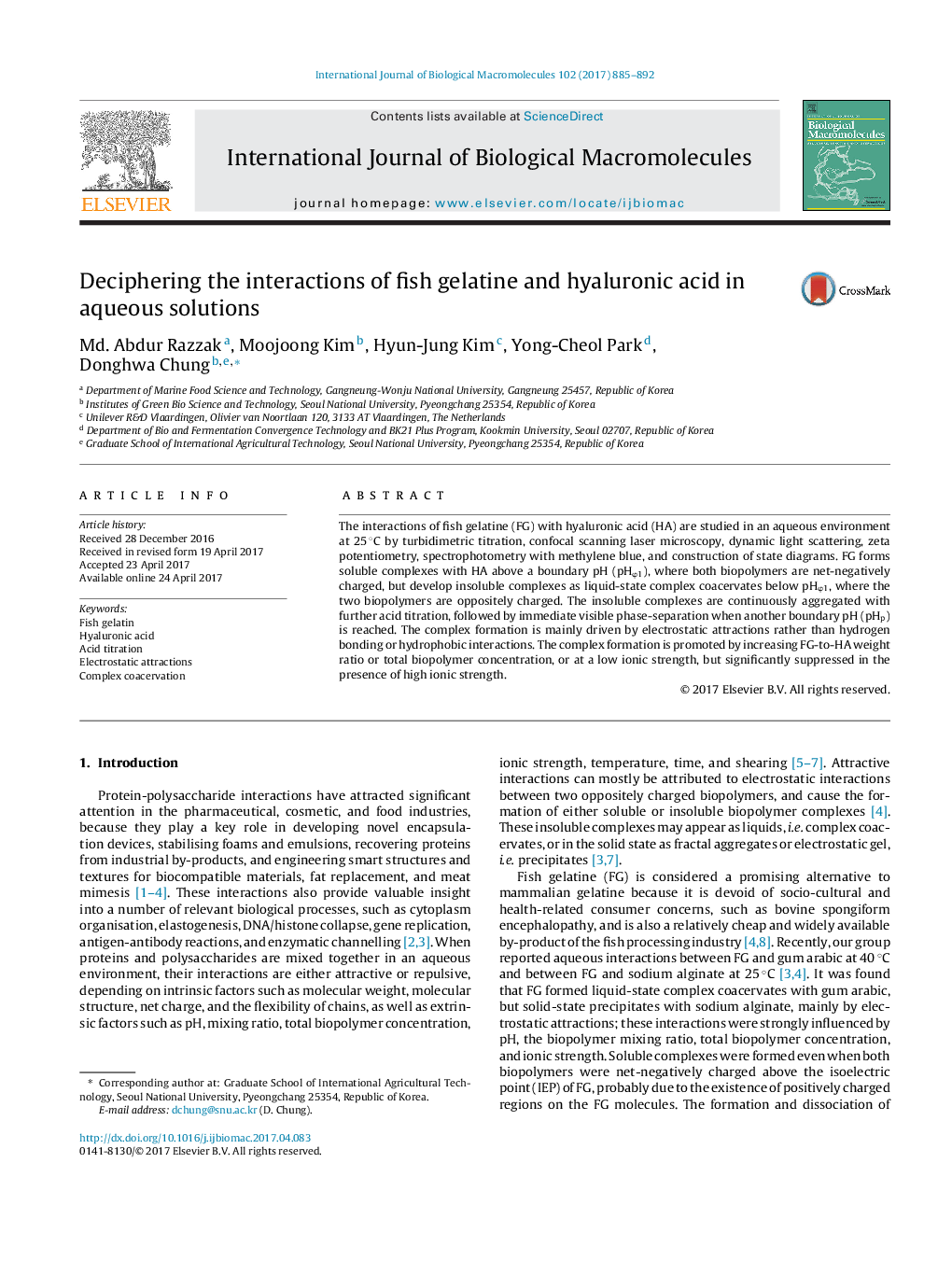| Article ID | Journal | Published Year | Pages | File Type |
|---|---|---|---|---|
| 5511817 | International Journal of Biological Macromolecules | 2017 | 8 Pages |
Abstract
The interactions of fish gelatine (FG) with hyaluronic acid (HA) are studied in an aqueous environment at 25 °C by turbidimetric titration, confocal scanning laser microscopy, dynamic light scattering, zeta potentiometry, spectrophotometry with methylene blue, and construction of state diagrams. FG forms soluble complexes with HA above a boundary pH (pHÏ1), where both biopolymers are net-negatively charged, but develop insoluble complexes as liquid-state complex coacervates below pHÏ1, where the two biopolymers are oppositely charged. The insoluble complexes are continuously aggregated with further acid titration, followed by immediate visible phase-separation when another boundary pH (pHp) is reached. The complex formation is mainly driven by electrostatic attractions rather than hydrogen bonding or hydrophobic interactions. The complex formation is promoted by increasing FG-to-HA weight ratio or total biopolymer concentration, or at a low ionic strength, but significantly suppressed in the presence of high ionic strength.
Related Topics
Life Sciences
Biochemistry, Genetics and Molecular Biology
Biochemistry
Authors
Md. Abdur Razzak, Moojoong Kim, Hyun-Jung Kim, Yong-Cheol Park, Donghwa Chung,
